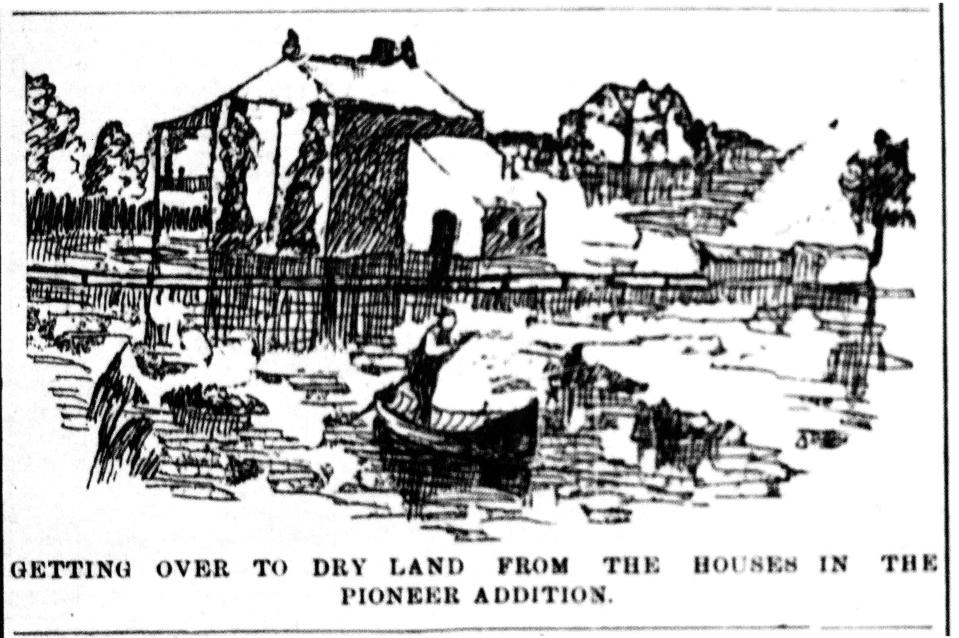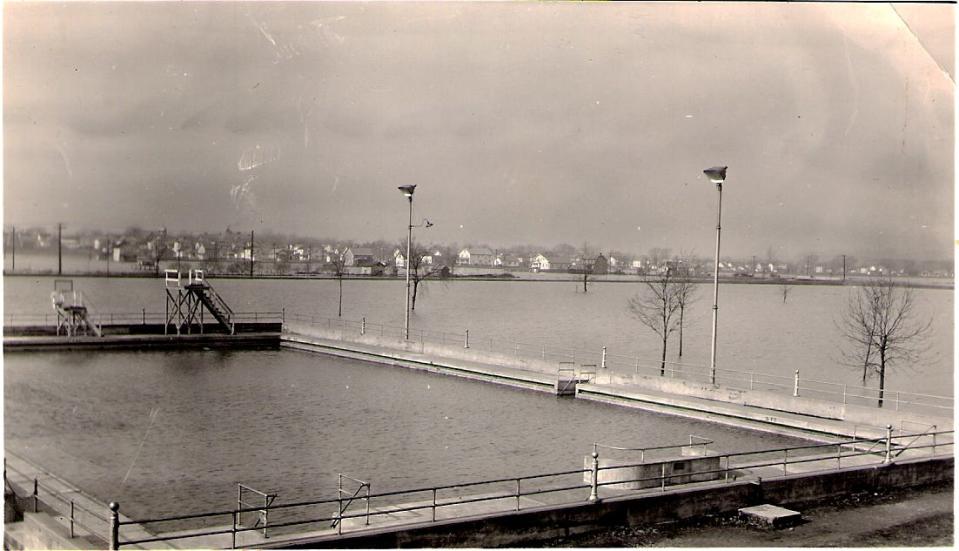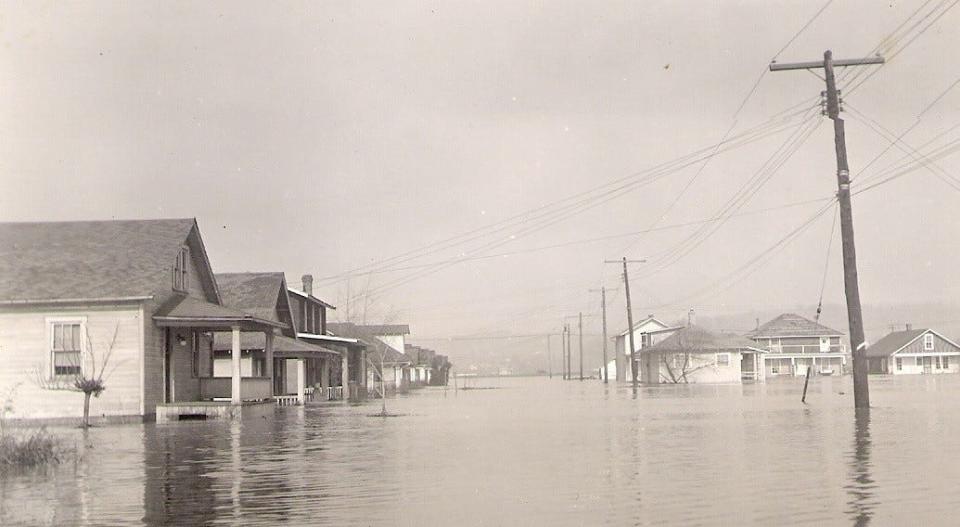Remember When: Lancaster went underwater
Have you been thinking about the gravity of floods surrounding us lately? As this writer has watched the recent flooding reported on television and newspaper pages, thoughts have turned to Lancaster/Fairfield County floods of the past. A limited amount of research was done 15 years ago to write a brief account of Lancaster’s flood of July 28, 1935 (E-G 24 Aug 2009).

The weatherman then reported 2.82 inches of rain fell in 50 minutes and was the heaviest rainfall in 25 years. The newspapers reported 20 bridges washed out, 300 refugees sought aid, and there was $500,000 damage. Believe it or not, Miller Park was submerged under six feet of water, and the water outside the swimming pool was deeper than the water in the pool.
Researching (by paddling backwards through “waves” of old newspapers) took us as far back as the 10 July 1873 Gazette headlines that read: “Unprecedented July Freshets; The Hocking Valley Under Water. Bridges, fences and crops swept away. Railroad transportation suspended. The Hocking Canal gone...The waters of the Hock-hocking, which had been greatly augmented by the constantly recurring showers of the preceding few days, overflowed its banks to an extent never before known, inflicting an amount of damage along the course of the stream altogether unprecedented in the history of freshets in Fairfield County.” [Freshet is an overflowing of a stream by heavy rains.]
“The waters, rising to a level with the canal at a point some distance above the city, melted away the towpath of the side-cut, and the waters of the canal mingling with those of the Hocking, thus materially increased the immense volume of water that rolled down the valley. The losses by destruction and carrying away of property in this county, including damages to crops, must run high into the hundreds of thousands of dollars...From the best accounts we have, it would seem that the Hocking Canal, in almost its entire length, is about ruined. The Hocking river and the canal were merged into one stream for a great part of their course...Whether it will ever again be placed in navigable condition, must we think, be regarded as doubtful. Should it be abandoned, the loss will be one of great magnitude to the communities through which it passes.” [The Lancaster Lateral Canal/Hocking Valley Canal was officially abandoned May 18, 1894.]

“A Great Downpour of Water in This Vicinity Last Night” was the description given in the Daily Eagle, 24 July 1896. “North Maple St. was almost submerged and the Pioneer Addition [West Side] and the low district just southeast of the city were veritable lakes this morning and hundreds of acres were covered by one vast sheet of water...Many cellars were filled with water...first floor of the houses covered, and the families driven up stairs to escape the flood.”
“Enterprising citizens” in this area had been using old canal beds for garden patches. “They were somewhat disheartened when they looked upon the scene this morning and could not see even the tops of the plants...The old canal had suddenly re-appeared and the only thing lacking to bring back pictures of the past was the canal boat and the old white mules trudging at the end of a tow line along the bank” (24 July 1896 Daily Eagle).
“The Greatest Flood Since 1873” was how the Daily Eagle described the 1907 flood in the Daily Eagle (13 March 1907). Unlike an artist’s sketches of flood damage in the 1896 newspaper, by 1907 J. H. Tobias was taking photos of the flood for the newspapers. He also had eight different photo cards printed and sold them for 35 cents each. Included was one of the flooded ball park.

“Flash Flood Wreaks Vast Damage; No Life Lost; Million Dollar Damage; 2000 Homes Flooded” was the headline of the Eagle-Gazette on 22 July 1948. Eight boats manned by police, firemen and volunteers evacuated hundreds of families from their homes. “More extensive in scope than the July 1935 flash flood which deluged the West Side, today’s disaster spread devastation over a three-mile area here, and at noon some 500 homes were still isolated...Hundreds of automobiles were covered by water eight and 10 feet deep on various streets...at least 18 bridges in the county were washed out completely.”
So yes, if you had been wondering about Lancaster’s flood history, Lancaster survived quite a few floods that put us underwater.
Readers may contact Harvey at joycelancastereg@gmail.com
This article originally appeared on Lancaster Eagle-Gazette: Remember When: Lancaster flooding history

